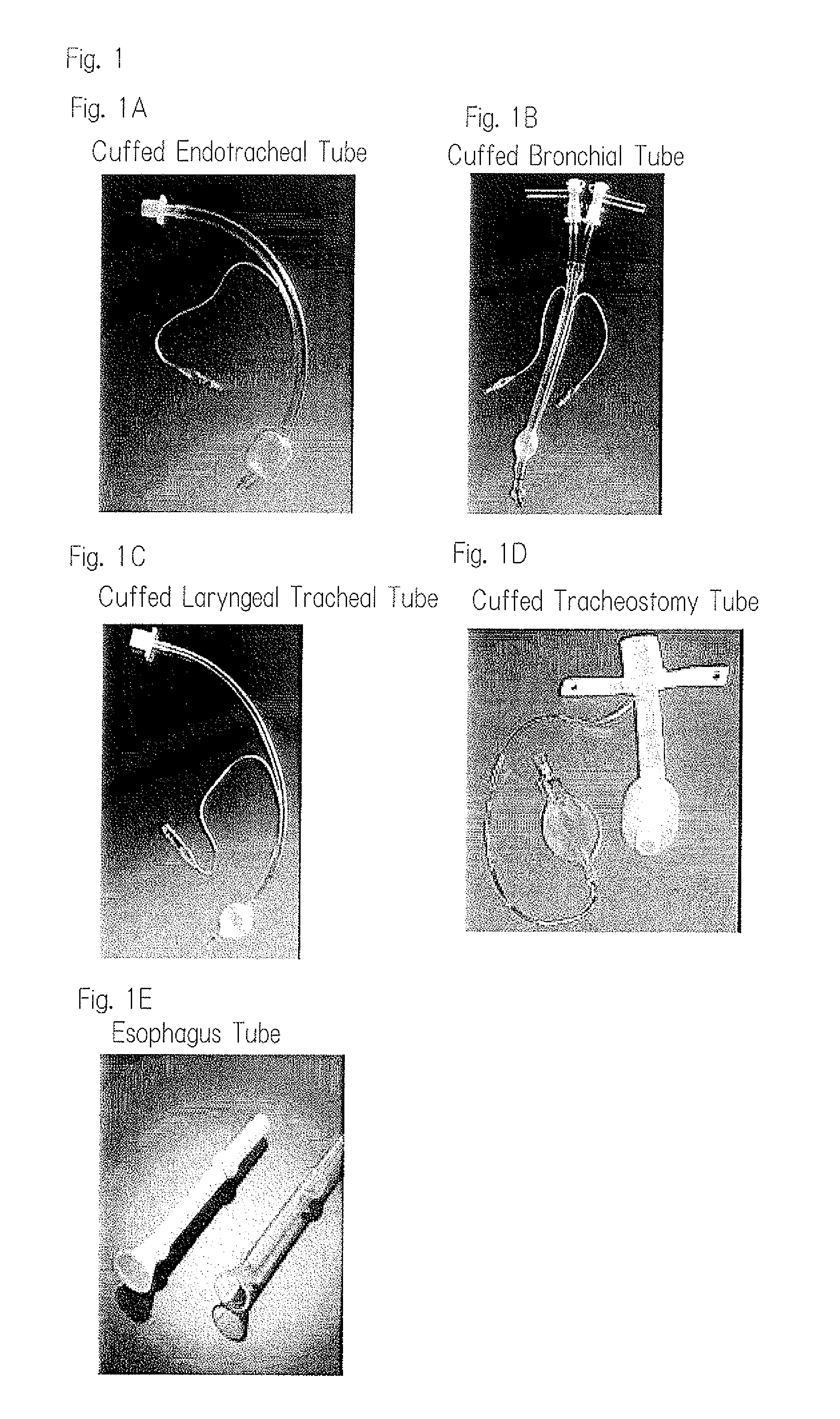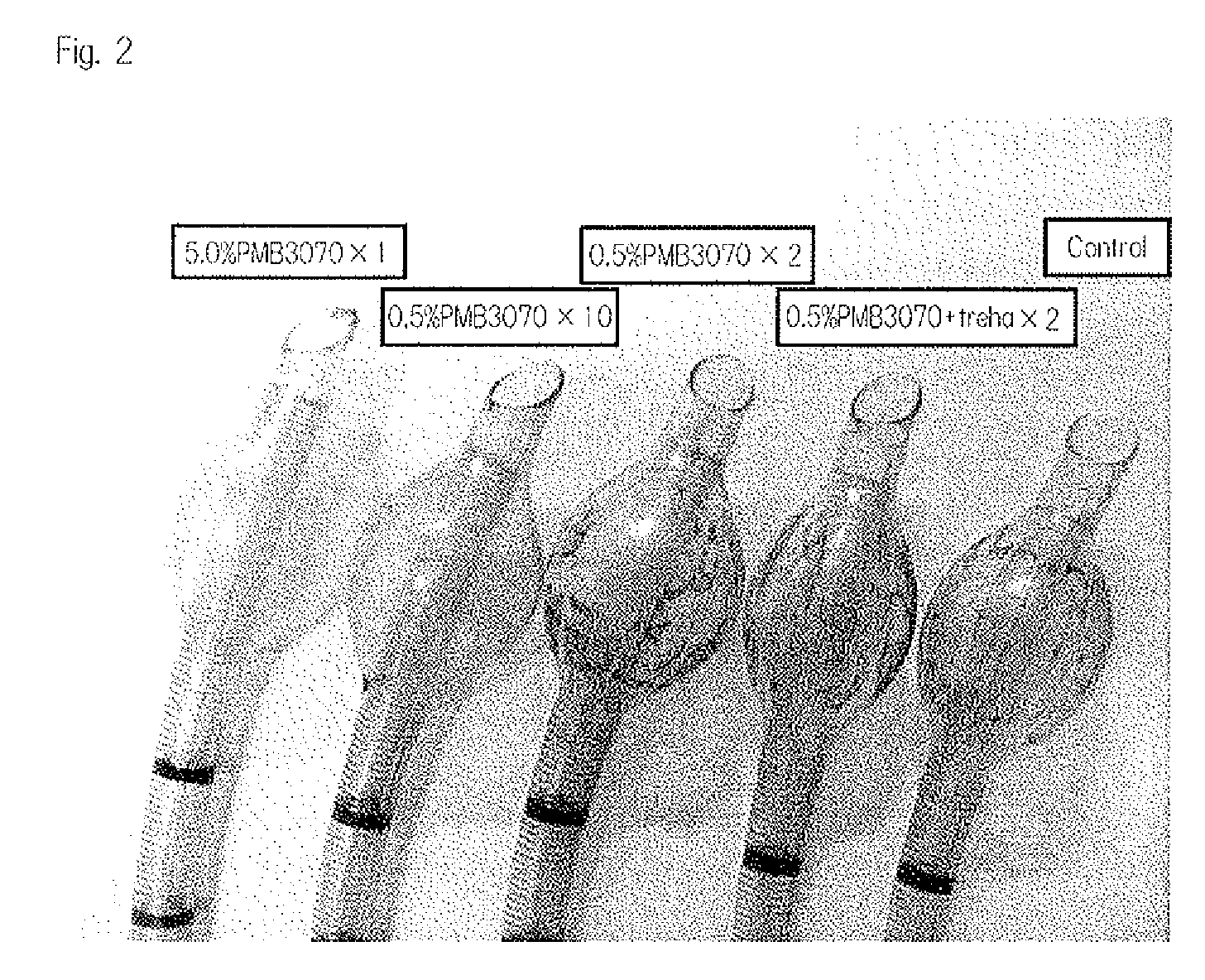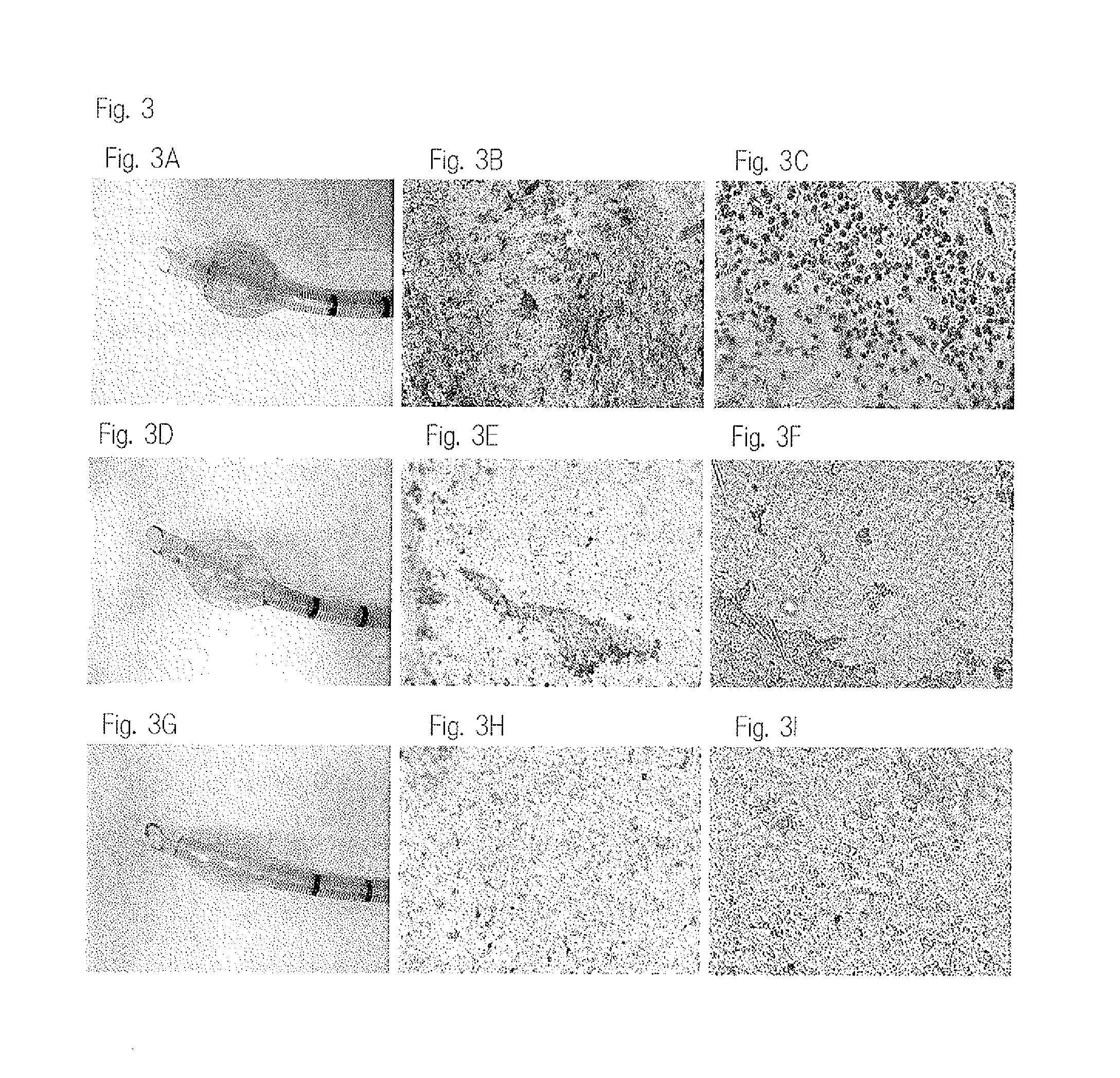Resin product for medical use and respiration-assisting tube
a technology of respiration-assisting tubes and products, which is applied in the direction of pharmaceutical containers, packaging foodstuffs, packaged goods types, etc., can solve the problems of high adhesiveness of respiration-assisting tubes with mucous tissue, and the patient will not be able to discharge phlegm, so as to prevent the occurrence of infectious diseases, prevent the injury of tissues of a living body, and suppress the occurrence of inflammation
- Summary
- Abstract
- Description
- Claims
- Application Information
AI Technical Summary
Benefits of technology
Problems solved by technology
Method used
Image
Examples
example 1
[0369]A cuffed tracheal tube was used as a breathing assistance tube. The cuffed tracheal tube was coated with a coating solution, and then inserted into the canine trachea. Four to Five hours after the insertion, the cuffed tracheal tube was removed to investigate the amount of cells deposited onto the cuffed tracheal tube and the damage on the canine trachea. In the meantime, a copolymer (PMB 3070) including 2-methacryloyloxyethyl phosphorylcholine (MPC) and n-butyl methacrylate (manufactured by NOF Corporation) was used as the polymer of the present invention. 100% Ethanol was used as a solvent for PMB 3070. In the meantime, PMB 3070 is represented by the above Formula (I), wherein R1 is a methyl group; R2 is a butyl group; n1 is about 300; and n2 is about 700. The number average molecular weight of PMB 3070 is 2.5×105.
[0370]PMB 3070 was dissolved with 100% ethanol so that the amount thereof reached 0.5% or 5.0% by weight. The cuffed tracheal tube was coated by dipping in respect...
example 2
[0375]Four or five hours after the insertion of the cuffed tracheal tube into a canine, the canine was euthanized, and the cuffed tracheal tube was detached therefrom. After detachment of the tube, the canine was anatomized to observe the damage state of the trachea. FIG. 5 shows the results. FIG. 5A shows the canine trachea into which the cuffed tracheal tube not treated with PMB 3070 (control) was inserted. FIG. 5B shows the canine trachea into which the cuffed tracheal tube coated with 5.0% by weight of PMB 3070 once (5.0% PMB 3070×1) was inserted. As a result, the exfoliation of the tracheal mucosa was observed for the control (FIG. 5A). On the other hand, no exfoliation of the tracheal mucosa was observed for 5.0% PMB 3070×1 (FIG. 5B). Namely, it has been demonstrated that the coating of the intratracheal tube with PMB 3070 can prevent the exfoliation of cells at the insertion site.
example 3
[0376]To a 35-mm dish, 100 μL of various coating liquids were applied (coated), and dried for 30 minutes at 40° C. After drying, the 35-mm dish was subjected to UV sterilization for 30 minutes in a clean bench. The sterilized 35-mm dish was wash with PBS (−) twice, and inoculated with L929 cells. After inoculation, the cells were cultured for 3 to 4 days. FIG. 6 shows the results. As the cell culture medium, a medium obtained by adding 10% FBS (fetal bovine serum) to a Dulbecco's modified Eagle medium (DMEM) was used. As the control, a 35-mm dish not coated with any coating liquid was used. A liquid obtained by dissolving PMB 3070 and trehalose in a 50% ethanol solution was used as the coating liquid. The concentrations of PMB 3070 and trehalose are indicated in the following Table 2.
[0377]
TABLE 2PMB3070TrehaloseControlNoneNone0.5% PMB3070 + 10% treha0.5%10%1.0% PMB3070 + 10% treha1.0%10%2.0% PMB3070 + 10% treha2.0%10%3.0% PMB3070 + 10% treha3.0%10%5.0% PMB3070 + 10% treha5.0%10%
[03...
PUM
| Property | Measurement | Unit |
|---|---|---|
| thickness | aaaaa | aaaaa |
| wt % | aaaaa | aaaaa |
| thickness | aaaaa | aaaaa |
Abstract
Description
Claims
Application Information
 Login to View More
Login to View More - R&D
- Intellectual Property
- Life Sciences
- Materials
- Tech Scout
- Unparalleled Data Quality
- Higher Quality Content
- 60% Fewer Hallucinations
Browse by: Latest US Patents, China's latest patents, Technical Efficacy Thesaurus, Application Domain, Technology Topic, Popular Technical Reports.
© 2025 PatSnap. All rights reserved.Legal|Privacy policy|Modern Slavery Act Transparency Statement|Sitemap|About US| Contact US: help@patsnap.com



